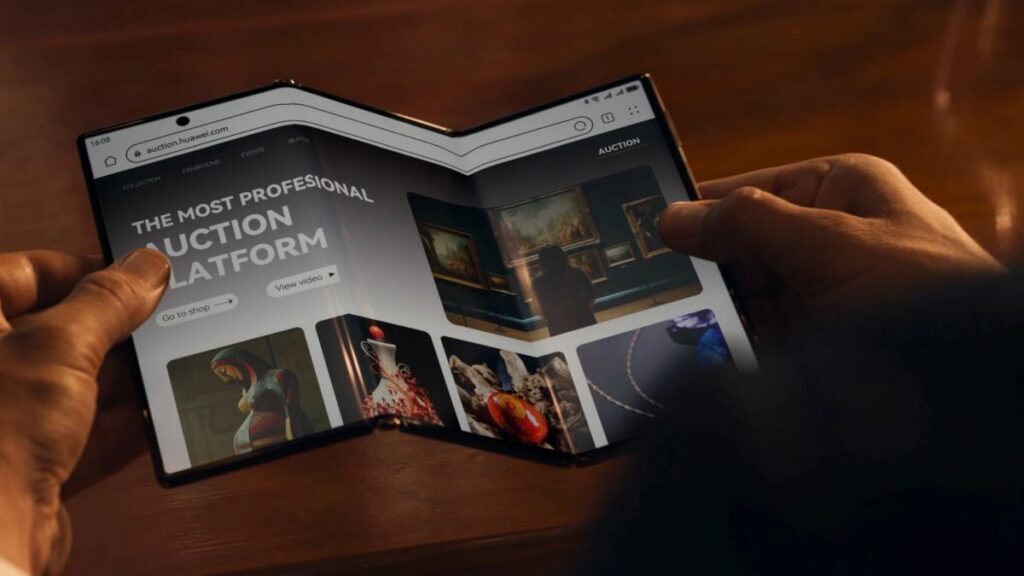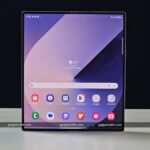According to a patent document published on the website of the China National Intellectual Property Administration (CNIPA), Huawei may be working on a foldable phone that could feature a cover that can be attached to the device. Images of the alleged handset suggest that it may ship as a tri-fold phone with an outer panel that doubles as a protective cover when closed. The company recently unveiled the Huawei Mate XT Ultimate Design as the world’s first commercially available trifold phone.
Huawei’s patent document indicates a foldable one with an attached cover
A patent document on CNIPA discovered by 91Mobiles describes a foldable device, such as a smartphone or tablet, that includes a protective case. The foldable device is said to have two hinged parts that can be deployed and folded. The document appears to be talking about a phone with two panels that could form a larger display.
The device in Huawei’s patent document has a fixed frame along with an attached cover that is designed to be flexible because it has to rotate around the flexible part of the foldable device when it’s closed. However, the description states that the cover will have a slim design to reduce the overall footprint of the phone.
According to the details available in the document, Huawei’s protective case can protect the device as it wraps around the part of the display that bends. The foldable device is said to have an S-shaped design when closed, and the protective cover has a transparent part that can be used to view the contents of the screen when the device is closed.
Huawei’s patent document also describes the use of magnetic components in the device to allow bendable parts to connect to metal parts inside it. It is currently unclear how these components will function, but the document clearly states that the purpose of the third component is to protect the display.
Although Gadgets 360 was able to confirm the presence of the patent document on the CNIPA website, it is not yet known if a device with this technology will be released in the future. As with other inventions described in patent documents, the company can change how the technology works before it is incorporated into future devices.


